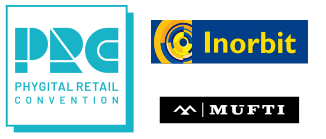
Just like the pandemic made us aware of our hygiene protocols in a way no one thought before, it delivered a much-awaited push to a revolutionary mode of retail in India — D2C retail. It all started with the birth of Flipkart when Indian D2C brands cropped up following the business model of the US startup Bonobos. But at that time, it was not seeming to be easy for the D2C brands, as the internet connectivity was abject, along with a non-existent social media. With FMCG giants like HUL, P&G, Dabur, etc. pushing hard in the market with their apt and efficient supply chain, it was not looking very promising for these newbies.
But the idea was spot on.
D2C brands skipped the middlemen which made them capable of developing an understanding, and a direct connection with the customers just like we build a relationship with our local Kirana store owners. It was 2015 when social media exploded and the golden time for D2C began. It was that time when logistics and supply chain models were restructured and brands like Nykaa, Licious, boAt, etc. started making their entry into the Indian market. And now, according to a KPMG report the sector was valued at $44.6B in 2021 and is projected to reach $100B by 2025. Thus, the future of D2C in India is going to be entirely dependent upon the investors, customers, and the value that the brands will be providing.
Recently, India has witnessed an alarm that went off in the ed-tech sector, with mass layoffs from big brands. D2C brands and the trend of explosive growth in the sector are also similar to that of the ed tech sector in India. Traditional business operations are always capital-intensive processes. With advancements in technology, the entry barrier in the Indian retail sector has drastically gone down, and with that, the competition has shot up in the D2C retail sector like any other business sector, and with that, the profitability equations with respect to capital have significantly gone down for many businesses. Hence, the whole D2C retail sector has been divided into two categories- one who are providing quality products and services to the consumers and thus depending on organic growth more than extensive promotion. On the other hand, some brands are constantly pouring in freebies, offers, and unstable deals to generate leads and exclusively depending upon the capital or funds raised in the process. The latter is the category that needs some rework on their business strategy to sustain themselves in the market, as the recent alarming situation in the Indian ed-tech sector tried to teach us, and whether it is going to help the D2C retail sector to forge itself strongly into the Indian market, only time will tell.
–Sayan Mukhopadhyay
But the idea was spot on.
D2C brands skipped the middlemen which made them capable of developing an understanding, and a direct connection with the customers just like we build a relationship with our local Kirana store owners. It was 2015 when social media exploded and the golden time for D2C began. It was that time when logistics and supply chain models were restructured and brands like Nykaa, Licious, boAt, etc. started making their entry into the Indian market. And now, according to a KPMG report the sector was valued at $44.6B in 2021 and is projected to reach $100B by 2025. Thus, the future of D2C in India is going to be entirely dependent upon the investors, customers, and the value that the brands will be providing.
Recently, India has witnessed an alarm that went off in the ed-tech sector, with mass layoffs from big brands. D2C brands and the trend of explosive growth in the sector are also similar to that of the ed tech sector in India. Traditional business operations are always capital-intensive processes. With advancements in technology, the entry barrier in the Indian retail sector has drastically gone down, and with that, the competition has shot up in the D2C retail sector like any other business sector, and with that, the profitability equations with respect to capital have significantly gone down for many businesses. Hence, the whole D2C retail sector has been divided into two categories- one who are providing quality products and services to the consumers and thus depending on organic growth more than extensive promotion. On the other hand, some brands are constantly pouring in freebies, offers, and unstable deals to generate leads and exclusively depending upon the capital or funds raised in the process. The latter is the category that needs some rework on their business strategy to sustain themselves in the market, as the recent alarming situation in the Indian ed-tech sector tried to teach us, and whether it is going to help the D2C retail sector to forge itself strongly into the Indian market, only time will tell.
–Sayan Mukhopadhyay








